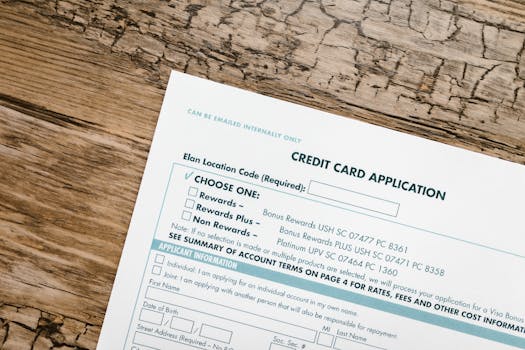Personal finance
How to Prioritize Financial Goals When Everything Feels Important
Struggling to choose between savings, debt, and big dreams? Get expert tips, actionable checklists, and real-life tactics for prioritizing your financial goals—no matter how overwhelming.
Advertisement
Money priorities can pull you in every direction at once. Savings, debts, and dreams compete for each paycheck, and your financial goals keep stacking up before you tackle the old ones.
Feeling overwhelmed is completely understandable. The challenge isn’t just making one choice. It’s choosing well so each dollar serves what matters to you—while navigating competing needs and the constant pressure of daily expenses.
This guide breaks down step-by-step strategies to help you sort financial goals skillfully. Let’s explore how to move from financial chaos to clear action, with less stress and more confidence every month.
Pinpoint Urgent Needs and Map Long-Term Goals Side by Side
Start by identifying which financial goals demand action right now—think overdue bills, required minimum loan payments, or rent. Consider which aspirations energize your motivation, too. Setting each on paper side by side brings clarity.
Instead of just listing everything, group needs by time horizon and consequence. Use real events as dividing lines—such as a medical bill due in ten days versus saving for a future home.
Spot Short-Term Pressure Fast
If worrying about missing a payment keeps you up at night, prioritize that item first. Sleep, stress, and basic needs are strong signals to take care of these goals before others.
Scribble out a basic script: “Rent is due on the 1st, so I need $1200 set aside by the payday before.” Mark deadlines visibly on your calendar.
Early wins with urgent financial goals build trust in your system. Tackling what’s most pressing creates headspace for long-term thinking in the next round of decisions.
Visualize Major Aspirations Clearly
Give your most important future goals a vivid name and context. For example, “Emergency Fund: $2,000 by December for peace of mind.” Don’t just say “savings”—describe what it’ll do for you.
Write each goal on a sticky note and put it on your fridge. Every time you see it, ask: “What can I do today to move this forward one small step?”
Attaching emotions or personal meaning to your financial goals helps you resist short-term spending temptations and keeps your sights on the bigger picture.
| Type of Goal | Time Horizon | Consequence of Delay | Next Action to Take |
|---|---|---|---|
| Pay monthly credit card | Recurring (short-term) | Hit with late fees | Schedule automatic payment |
| Emergency fund | 6–12 months | No buffer for unexpected costs | Open high-yield savings |
| Retirement savings | Long-term (10+ years) | Miss out on compound growth | Set recurring deposit |
| Vacation fund | 1–2 years | May postpone trip | Break into monthly goal |
| Medical expense | Immediate/short-term | Possible bill in collections | Call provider about plan |
Rank Each Goal with a Consistent, Simple Rule Set
Create a personal checklist so you don’t just go by what “feels” most urgent every week. Each time you review your priorities, score each financial goal using this set of rules.
Decide ahead of time: will you weigh deadlines, emotional importance, or financial consequences most heavily? A repeatable rubric takes the stress out of shifting priorities.
Try a 1–5 Scoring System for Clarity
List your top five or ten current financial goals, then rate each one for urgency (1–5), impact on your daily life (1–5), and progress required (1–5). Add the numbers for a total score.
- Score urgency: Assign 1 for no immediate need, 5 for a due bill or critical cost.
- Score impact: Use 5 for essential expenses (housing, utilities), 1 for minor wants.
- Score effort: Judge how much time or money is needed by the next paycheck.
- Add up each goal’s points to see rankings. The top scores get resources first.
- Revisit and rerate monthly. Life changes, so your system must adapt.
This concrete rule system reduces second-guessing. Scores make your financial decisions more data-driven and less emotional.
Choose the “Minimum Viable Progress” Every Month
Find a small monthly action for each goal—one phone call, $20 transfer, or research task. The trick is choosing progress you’ll actually follow through with, not just a wishful leap.
For example, set up an auto-transfer to a savings account for your emergency fund, even if it’s $10 a week. These little moves build momentum and keep multiple financial goals alive.
- Start tiny: Set goals low enough that you always succeed. Celebrate hitting even the smallest milestones.
- Remove friction: Automate deposits or pay down debt directly after payday with a scheduled draft.
- Block distractions: Put reminders on your phone and calendar so progress never falls through the cracks.
- Reward follow-through: Track when you complete “minimum viable” moves and mark it with a small treat or day off from finance chores.
- Share progress: Tell a friend or partner when you complete a step for added accountability and motivation.
Minimum viable progress helps you push all your financial goals forward at once, without feeling stuck or burned out.
Weigh Trade-Offs by Imagining Real-Life Scenarios
Practically, you can’t do everything at once. Instead of beating yourself up for hard trade-offs, walk through actual outcomes. Visualize what happens if you delay or skip a financial goal this month.
Play Out “If, Then” Scenarios for Decision Confidence
If you pay half your credit card bill now and the rest in two weeks, will you face a late fee or just added interest? Write out consequences concretely.
Apply this to every big financial goal moment. If you put $100 toward your emergency fund—and not your student loan—next paycheck, say aloud what might happen.
When you name the trade-offs clearly, decisions stop feeling random. You gain peace by picking what’s best for this pay cycle, not chasing perfection.
Rehearse Your Response in Stressful Money Moments
Picture getting an unexpected medical bill. Your chest tightens and your mind races to the worst outcome. Instead, pause, breathe out, and review your ranking sheet from section two.
Say: “Medical comes before vacation savings for now.” This script makes your next step automatic, without guilt or indecision.
The habit of rehearsing responses means every surprise cost gets addressed calmly. Over time, you’ll trust yourself to pivot without losing sight of long-term financial goals.
Separate Non-Negotiable Expenses from Flexible Aspirations
Dividing needs from wants isn’t about self-denial. It’s about making space for both—while keeping your essentials protected month after month. Your financial goals should reflect these realities.
Build a Tiered List for Expenses
Draw two columns labeled “Non-Negotiables” and “Aspirations” on paper or a spreadsheet. Start by filling out the must-haves: housing, groceries, insurance, transportation, and minimum debt payments.
In the other column, write the dreams, projects, or luxuries you hope to fund next—vacations, restaurant outings, or a new device. Put your hand on each item and say its name aloud before committing dollars.
If resources get tight, this habit guides your cuts quickly and without regret. Each financial goal still gets attention, but non-negotiables always receive first dibs on available funds.
Use the “Zero-Based” Allocation Approach
Zero-based budgeting means assigning every dollar to a particular job—bill, savings, or fun—before the month starts. No money floats with “maybe” labels.
If you use this approach, revisit your list and ask, “What job does each dollar do once it hits my account?” Keep adjusting until all income is spoken for.
With a zero-based process, you customize spending to fit real priorities, so even small wins for aspirational financial goals feel accounted for and celebrated each month.
Find Your Rhythm and Adjust Priorities as Life Moves
Setting and prioritizing multiple financial goals takes time, honesty, and trial-and-error. Each action—from ranking to small progress steps—moves you toward steady, meaningful results.
Your personal system isn’t final. It needs flexibility as life changes. New priorities will emerge, and old goals will be replaced. Revisiting your process regularly keeps you on track.
The ability to sort and act on financial goals transforms your money habits, reduces anxiety, and lets you build a life truly aligned with your values—one decision at a time.





